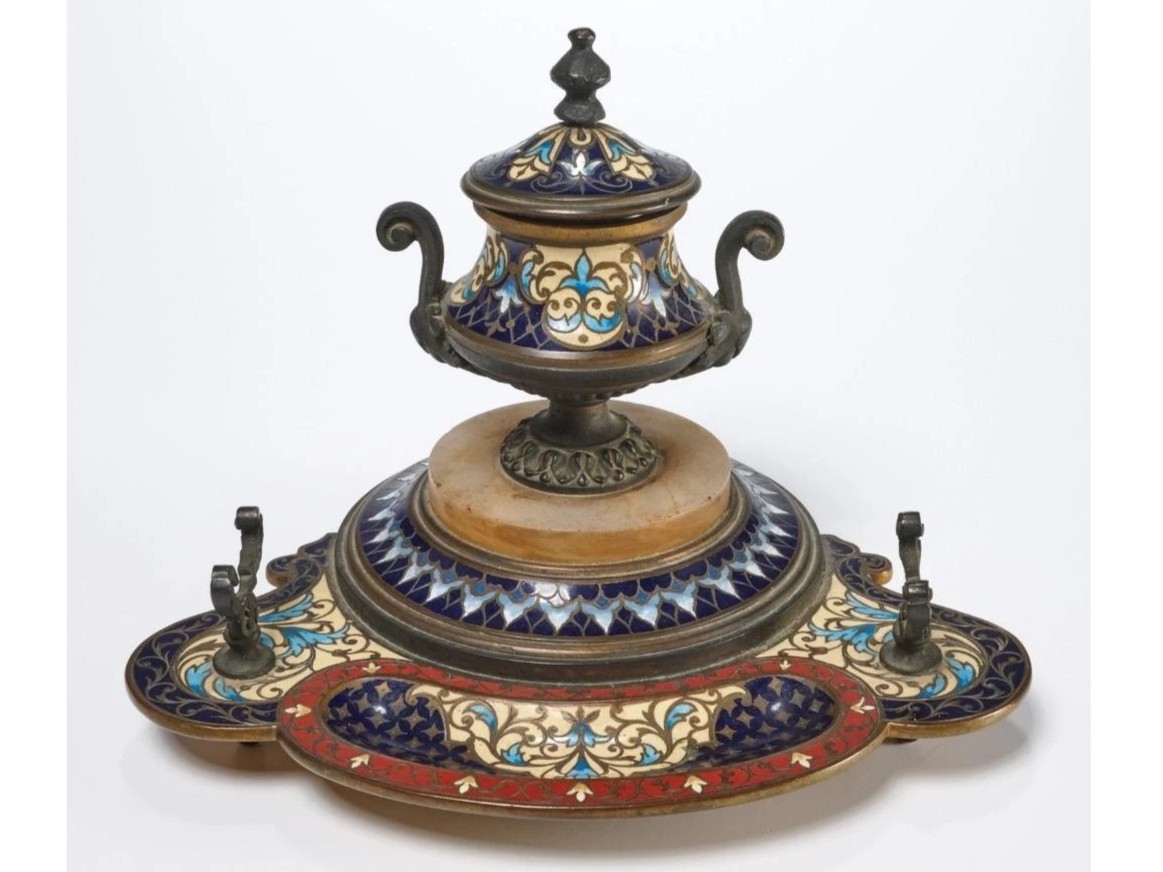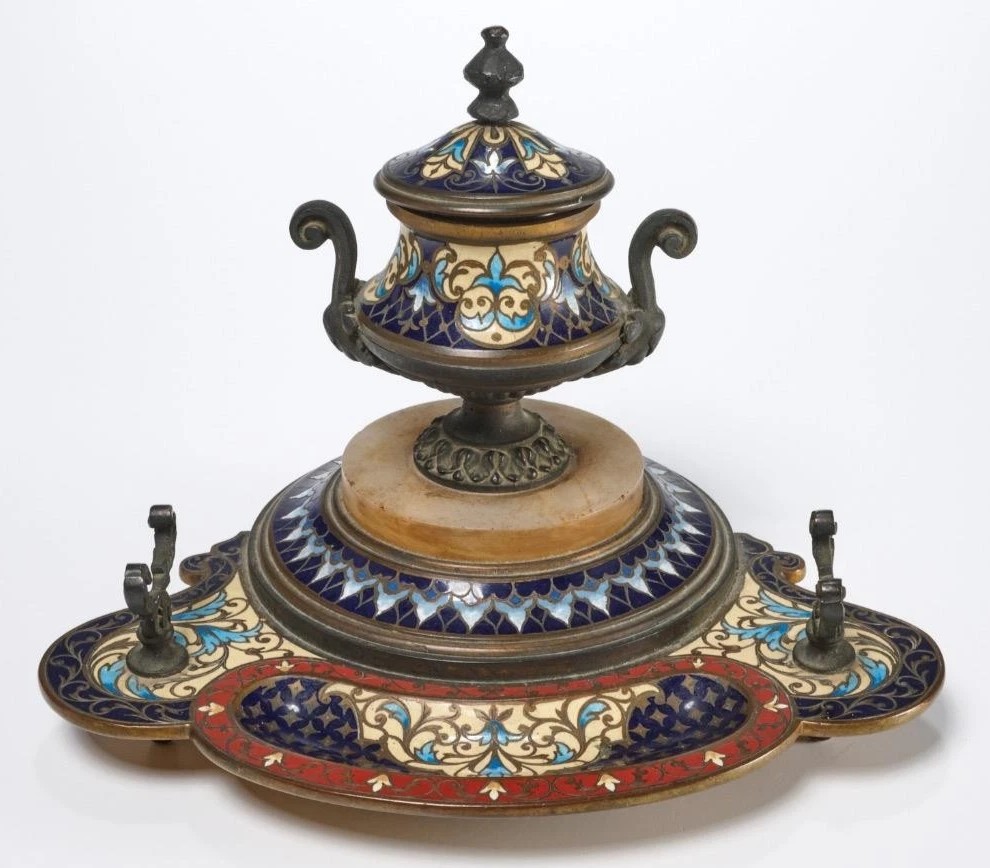
Inkipedia
French Champlevé Inkstand
| Categories | Enameled Metal |
| Type | Champlevé |
| Material | Enameled Brass/Bronze/Metal |
| Markings | Unmarked |
| Manufacturer | Undetermined |
| Origin | France |
| Date or Era | circa 1870 |
| Measuring | 6 ¾” x 5 ½” x 4 ¾” high |
This ornate inkstand is made of gilt bronze, decorated with the champlevé enameling technique.
- Base: The inkstand rests on a base that is elevated by four stylized feet. The base itself is a rectangular tray with clipped corners and a raised, scalloped edge. This entire surface is decorated with intricate champlevé enamels. The colors are vibrant and include deep blues, rich reds, turquoise, and white, arranged in a mix of floral, foliate, and geometric patterns.
- Inkwell and Lid: The inkwell itself is an integrated part of the stand. It is a single, lidded well, which holds a glass insert for the ink. The well is shaped like a small vase or urn and is heavily enameled, matching the design of the base. The hinged lid is also enameled and topped with a small finial.
- Pen Holder: Flanking the inkwell are two symmetrical raised “half-moon” sections to cradle a pen.
- Overall Aesthetic: The piece is a luxurious desk accessory. The combination of the gilded metal with the vibrant, deeply colored enamels creates a striking visual contrast.
The Champlevé Technique
- What is Champlevé? The term “champlevé” is French for “raised field.” It is an enameling technique where recesses are carved, cast, or etched into the metal surface. These depressions are then filled with colored enamel paste, and the piece is fired at high temperatures until the enamel fuses and hardens. Once cooled, the surface is polished, leaving the raised metal portions to serve as a framework or outline for the colorful enameled designs. This differs from cloisonné, where metal wires are soldered onto the surface to create the cells.
- Time Period and Origin: The style and craftsmanship of this piece are characteristic of French decorative arts from the mid-to-late 19th century, specifically the Napoleon III or Second Empire period (1852–1870), which often featured elaborate, revivalist styles. The vibrant colors and geometric and floral motifs are common in this period. The use of champlevé enamel on gilded bronze was a popular way to create opulent, high-status items for the wealthy.
Sold for $126 in August 2025
Content disclaimer. The information posted is the owner’s best knowledge and may not have been vetted by the SOIC. We welcome comments, corrections, and additions, working to make our website information comprehensive and accurate.
Join the Society of Inkwell Collectors (SOIC) – it’s free!
Founded in 1981 as a non-profit organization,
we are documenting inkwells (and accessories).
We’re here to help and inform!






